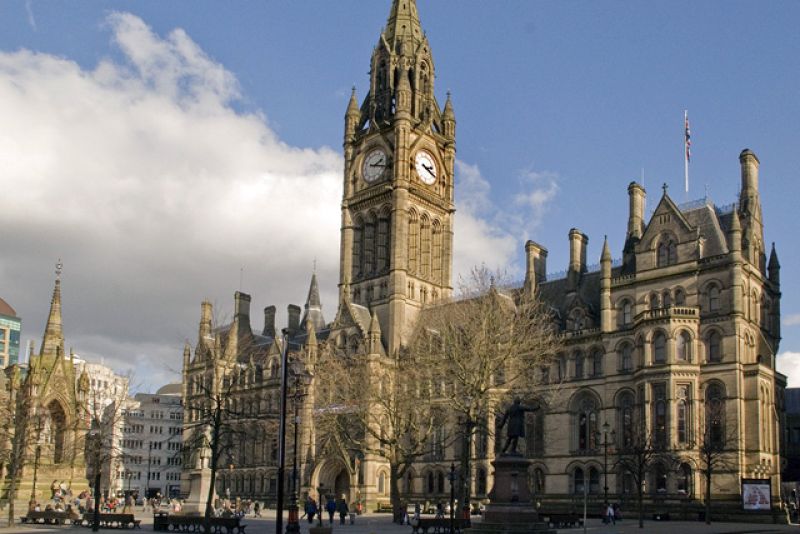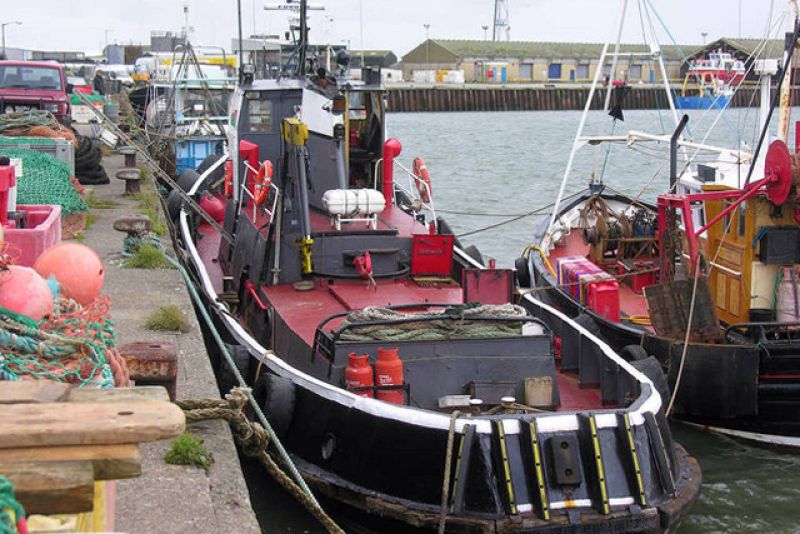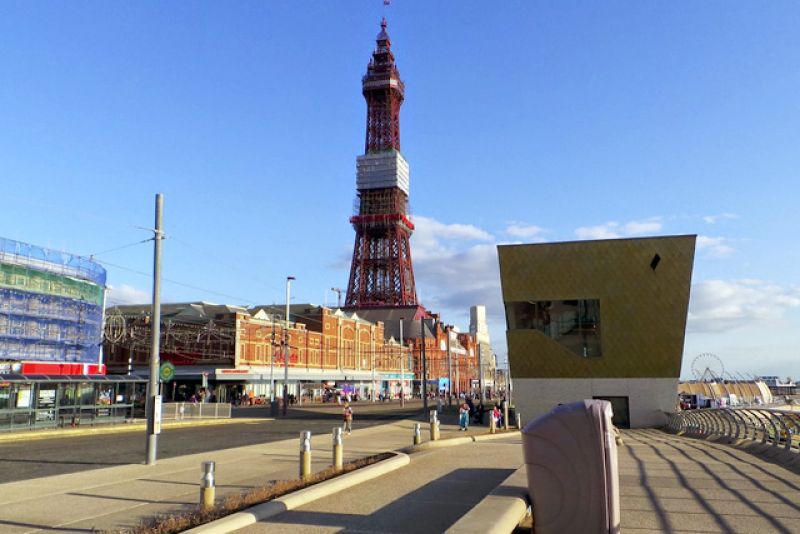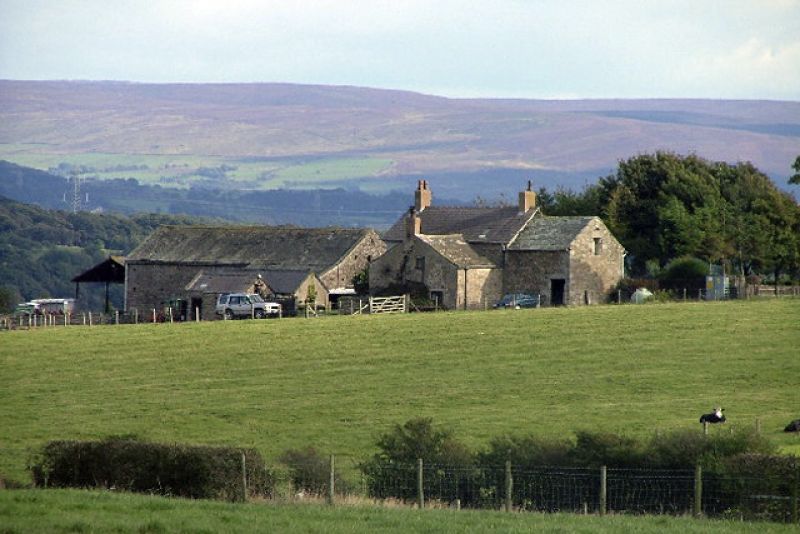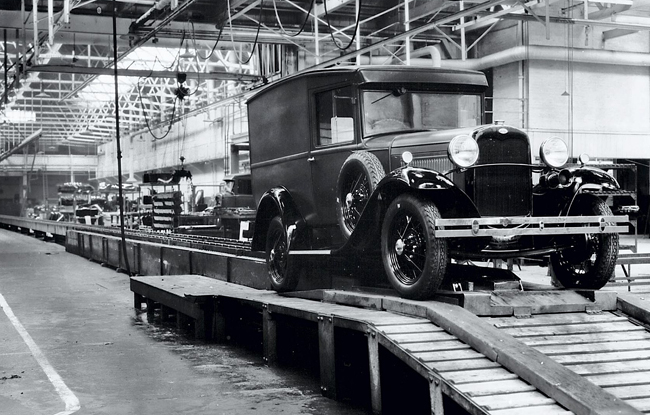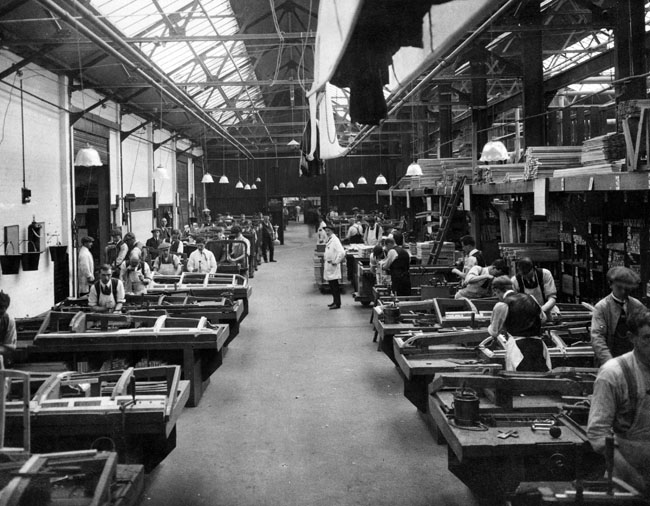Created Date:
Last Modified:
Ford Motor Co. Ltd
Henry Ford’s first UK factory, and the first Ford factory to be built outside North America.
Location
Westinghouse and Manchester Roads, and First Avenue, Trafford Park, Manchester.
Date
October 1911 – September 1931.
Commentary
Henry Ford built his first car – or Quadricycle, as he called it – at his home in Bagley Avenue, Detroit, in 1896; but it wasn’t until 1903 that the Ford Motor Company was successfully established in the United States, and production seriously underway.
The first Ford motor cars arrived in Britain a year later, imported by Aubrey Blakiston, who ran the American Motor Company, based at 117 Long Acre in London. In 1905, shortly after his friend Percival Perry joined the business, the trading name was changed to the Central Motor Company. The partnership does not seem to have been a great financial success; and in order to generate extra capital to support the venture, Percival Perry travelled to Detroit seeking Ford’s help to finance British sales. Although not immediately successful, the contacts made between Percival Perry and the Ford organisation ultimately proved beneficial when Perry was asked by Ford in 1909 to found the Ford Motor Co (England).
Initially, fully assembled cars were delivered, in large wooden crates, from Detroit to the new London office at 55-59 Shaftesbury Avenue. However it was not long before Percival Perry was masterminding the transfer of the business to Trafford Park and the assembly of Ford motor cars in Britain.
Ford opened their Trafford Park factory, in a former tramcar carriage works, on 23rd October 1911, producing a right-hand-drive version of the Model T, assembled on trestles from largely American parts. Initially, bodies were imported from the US, but the styles did not meet British tastes and so, in 1912, a new body department was established at the factory.
Within three years, car assembly had been transferred to a production line. Chassis were placed on a powered track which moved to a series of stations where men added a single component or sub-assembly. As a complete chassis rolled off the end of the line it was joined to a pre-assembled and trimmed body. This was Britain’s first moving assembly line and coincided closely with similar developments in Ford’s US factories. By 1914, Ford was also Britain’s largest car producer, with an annual output of 6,000 cars from its Manchester factory; more than double that of its nearest British competitor, Wolseley Motors.
During the First World War, the Trafford Park factory was placed in government control, producing munitions as well as cars, trucks and ambulances, with 30,000 Model T’s being supplied to the armed forces.
Immediately after the War, Ford’s sales flourished (in 1919, 41 per cent of British registered cars were Fords), but by the early 1920s the company began to do less well and as the decade progressed Ford's became in urgent need of a new model that was more in tune with the economic situation in Britain.
Several attempts were made by the company to modernise and enlarge the premises at Trafford Park, but ultimately to no avail. In order to develop a more integrated system of mass production Ford needed to start afresh at a new site, which turned out to be at Dagenham in Essex. The new site was chosen in 1923, but took a considerable time to be developed, and it wasn’t until 1931 that the Company left Trafford and moved down to Dagenham.
Most of Trafford Park remained unsold until 1946, although the factory was used during the Second World War when Ford returned as agents to organise the construction of the Rolls-Royce Merlin engine, used in Spitfire and Lancaster aircraft.
Other locations
Dagenham, Essex
Halewood, Merseyside
Langley, Berkshire
Swathling, Hampshire
Further details
- Ford in Britain: centenary file, Eric Dymock, Dove Publishing, 2011
